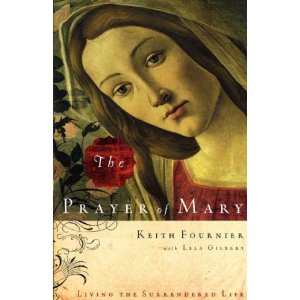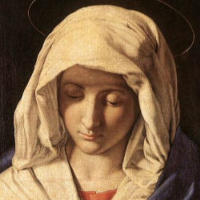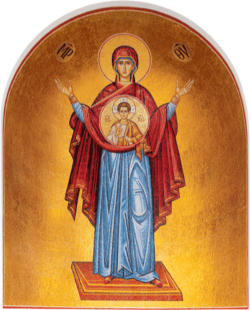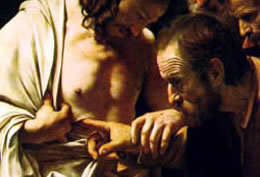 On this mothers day, I am drawn once again to reflection on motherhood and its meaning. Many years ago I was an invited guest at a celebration of the life and ministry of an evangelical Protestant leader. It was a “black tie” affair, accompanied with all the fanfare. I was one of only a few Catholics who attended the event and I was glad to be there to pay tribute to this man. Back then, evangelical and Catholic collaboration was not all that common. Thank God, things have changed.
On this mothers day, I am drawn once again to reflection on motherhood and its meaning. Many years ago I was an invited guest at a celebration of the life and ministry of an evangelical Protestant leader. It was a “black tie” affair, accompanied with all the fanfare. I was one of only a few Catholics who attended the event and I was glad to be there to pay tribute to this man. Back then, evangelical and Catholic collaboration was not all that common. Thank God, things have changed.
At the end of the evening, Reverend Jack Hayford gave the concluding tribute, address and prayer to conclude the nights’ festivities. Pastor Hayford’s message, (to the surprise of some present), was that we are living in, what he called a “Mary Moment.” With genuine insight he broke open the meaning of the life and mission of the Mother of the Lord as a model for all in that room and beyond who wanted to follow her Son Jesus.
He offered the life of Mary as a model for all Christians. He encouraged all those present to follow her way of simplicity, humility and obedience. He emphasized the particular words spoken by Mary at the Wedding Feast of Cana when, after imploring her Son to perform His first public miracle (ah, the powerful intercession of a mother!) she directed those who were serving to: “Do whatever He tells you.” In this message, he was participating in what the early fathers of the Church did so often and so beautifully, breaking open the deeper mystery of Mary as a gift to – and type of – the Church.
Over the years, this kind of recovery of the significance of the life and witness of Mary has touched many Christians. For Catholic and Orthodox Christians, it has always been at the heart of our understanding the meaning of the mission of the Church. Catholics and Orthodox honor Mary as the “Mother of the Lord”, the woman singularly chosen in the eternal plan of God to be called “mother” by Jesus, to bear God Incarnate in her womb for nine months and then to give Him to the whole world. That womb of that mother was a “temple of glory”, an “ark of the Covenant” and a new “tent of meeting” where heaven touched earth! 
She was also a real mother who was privileged to, (along with Joseph), raise the One who lived within her for nine months after He was born. In her presence and with her human influence, the biblical texts tell us He “grew in wisdom and stature” in His Sacred humanity.(Luke 2:52) Think about the wonder of all of this on this Mothers Day.
In the undivided Church, East and West, for the first 1,000 years, devotion to and love of Mary was a shining light of the profound prayers, reflections and writings of the Christian Church.When one probes the lives of Augustine of Hippo, Bernard of Clairveaux, Therese of Liseux, the late Theresa of Calcutta and so many others within the western Christian tradition, including even Martin Luther, one finds this kind of love for and devotion to Mary. The words of Martin Luther express it with such simple clarity:”Men have crowded all her glory into a single phrase: The Mother of God. No one can say anything greater of her.”
Jesus called her “Mother” and he entrusted her, as one of his last and greatest gifts to his beloved disciple and to the entire Church with these tender words of entrustment in the Gospel of John: “When Jesus saw his mother and the disciple there whom he loved, he said to his mother, “Woman, behold, your son.” Then he said to the disciple, “Behold, your mother.” And from that hour the disciple took her into his home.” (John 19:26, 27)
Mary was there at the Incarnation, Birth, Crucifixion, and Resurrection of God Incarnate. She was there throughout the often called “hidden years” in Nazareth. In the life of the Redeemer, every word and every act was redemptive, revealing as it does the very life of God, the mystery of heaven touching earth, and the deeper purpose of our own lives. She was there in those moments whose impact is timeless. They are still as filled with the invitation of grace today as they were when they first occurred.
She was there on the great day of Pentecost, the birthday of the Church, which we will soon celebrate. She was there as the first evangelizer and disciple who gave the first Christian testimony to her cousin, Elizabeth, and won the first convert “in utero” in the person of John the Baptist. This event, traditionally called “The Visitation,” is recorded in the Gospel of St. Luke (Luke l: 39-45).
This encounter immediately follows the visit of the Angel Gabriel to Mary (Luke 1:6-38) and is one of the fruits of her humble obedient response. That response was not a onetime reaction. It was the fruit of a life of surrender and stretched forward to characterize her whole life on this earth and her participation in the eternal communion of Saints. The Prayer of Mary is more about being than doing. It is about surrendered love to God.
Her “Fiat” [Medieval Latin, from Latin, let it be done) in response to the visitation from the messenger of heaven, the angel, provides a pattern of prayer and a way to live for us. It immediately issues forth in the fruit of her praise, her “Magnificat.” This canticle begins with the words in Latin Magnificat anima mea Dominum (“My soul doth magnify the Lord”) This hymn of praise is memorialized in that beautiful biblical text which ancient Christian tradition referred to as “The Magnificat” (Luke 1:46-55). The “Fiat” is more than a prayer and the “Magnificat” more than a hymn of praise. Together they constitute a lesson book, a guide, for this journey called life.
She said “Yes” to the invitation to love and she humbled herself. She confronted her own fears and she entered into a way of living. All of this was in continued response to an original invitation of love, a gift, initiated by a loving God. Her simple response of “yes” overflowed into her “magnificat” of praise. Through this response, she assumed a life’s posture of receiving and giving, she became a fruitful woman, a “God-bearer” or “Mother of God” (which in Greek is Theo-tokos). She brought forth the Word of God! Her “Yes”, her humble surrender, is a trajectory of love, a prototype of the vocation of every human person to bear the fruit of surrendered love.
It reveals the meaning of life for all men and women who are children of the one Creator. God is not meant to be an “add on” to our life. Rather, He is its source and its summit. There is a way, a pattern that all men and women are invited into – not just once, but daily. It reveals the path to authentic peace and is the portal of the mystery of meaning itself. It is what Christian Scripture calls the “more excellent way”, the way of love. Mary understood and walked this way with extraordinary humility. (1 Cor. 12:31) She shows us the pattern of love surrendered to Love.
Is it any wonder that the early Christians painted her image in the catacombs during their moments of fear, persecution and doubt? They found great inspiration from this little woman of great faith. In her “yes” they came to understand that ordinary people can change human history. They were inspired to add their own “yes”, their own “fiat” to hers.
Justin Martyr and many other early Christian apologists found in her “fiat”, her obedient “yes” to the angel, the undoing of the “no-I will not serve” given by the first woman Eve. They called Mary “The Second Eve”, the mother of a new creation. In her womb was carried the One whomScripture calls the “New Adam”, he was born from her as the first born of a new race of men and women who would find a new birth through His life, death and Resurrection.
 That same Redeemer now resides within, and lives through, all those who respond to the invitation of Love like she did. Mary’s choice, her response to the invitation of a God who always respects human freedom, is a singularly extraordinary event in all of human history. However, it is meant to be much more. It is an invitation to each one of us to explore our own personal histories and to write them anew in Him by exercising our own freedom by choosing the more excellent way.
That same Redeemer now resides within, and lives through, all those who respond to the invitation of Love like she did. Mary’s choice, her response to the invitation of a God who always respects human freedom, is a singularly extraordinary event in all of human history. However, it is meant to be much more. It is an invitation to each one of us to explore our own personal histories and to write them anew in Him by exercising our own freedom by choosing the more excellent way.
Mary shows us the way to surrender to Gods loving invitations in our daily lives; a path, to living a life of surrendered love. When we embrace it , It allows Love Incarnate, the Savior whom Mary bore to be, in a real sense, to be “incarnated” in and through each of us so that He can be given to others. We become “God Bearers.”
We become the tent and the ark within which that same God takes up His residence, comes to dwell, in our age – which is so desperately needs His saving presence. When we begin to touch and grasp this profound insight we not only find ourselves transformed but learn how to become the vehicles through which Love is incarnated for all those around us. He comes to dwell in all men and women who say “Yes” to Him. “Whoever loves me will keep my word, and my Father will love him, and we will come to him and make our dwelling with him.” (John 14:23)
Mary shows us how to participate in the ongoing incarnation of God’s Love for the sake of world; to live redemptively. We are called to bear God to an age in need. In living this kind of surrendered life we are transformed and participate in the mediation of God’s love to others. The ongoing creative and redemptive work of God’s love continues through us. That is, if we learn to respond the same way Mary did: “Behold the servant of the Lord. Be it done unto me according to Thy word.” We are living in a Mary Moment. Happy Mother’s Day.
You may order a copy of Deacon Fournier’s Book of relections on Mary written several years ago entitled “The Prayer of Mary, Living the Surrendered Life”

